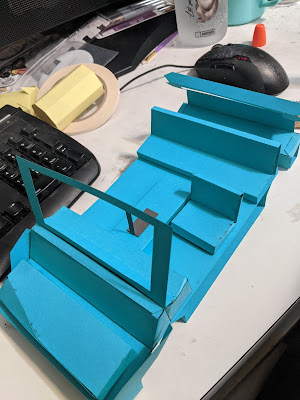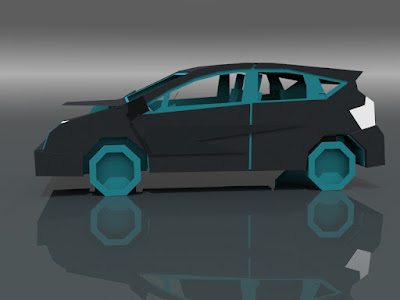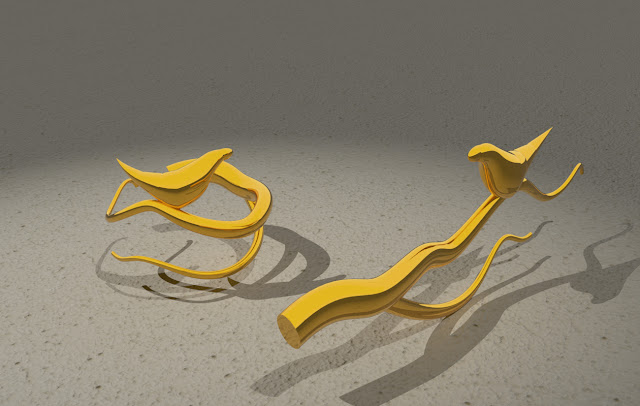Papercraft: The Final Resolution
This has been quite a journey. I have gone over every speck of my destroyed car (and reference images of intact Versa Notes) to compare it to the model I have created and revised. I have reconciled what was possible to recreate in paper against what I saw and what skill I have, and hopefully, done an sufficient job in striking a balance.
It has been important to me during this project to stay true, not just to the spirit of the vehicle and it's meaning to me (over say, absolute visual/proportional accuracy) but also to the spirit of the material I was working in. I have considered the limitations of paper and tried to stay within the boundaries of what one can possibly ask, or should ask, cardstock to do. This is linked to the study of the Constructivists/ Constructionists I undertook in Sculpture class last semester. There's a kind of honour and reverence in knowing the limits of the material and showing it as best you can, acknowledging the faktura, as well as the construction. In my mother's language, nêhiyawêwin, important objects are referred to by animate terms, to indicate they are alive, or worth the respect of something alive - perhaps that is why faktura resonates so deeply with me. It seemed important that I set this object up for success.
My study of constructivists/constructionists, especially Gabo, also came in handy for understanding how I was going to create the space of the papercraft vehicle. Although the external skin prevents immediate visual linkage, a perusal of the rhino models would reveal an interior reminscent of Gabo's stereometric cubes - chambers created by cross braces that create volume and permit structure. This allowed a interior volume that allowed me to include my final revisions - the interior.
After adding in the necessary tabs, I undertook a few more revisions - flattening the swooshs to balance time/energy. Changing the tires to create more volume by revealing an interior, as well as creating the illusion of hubcaps through shadow. This didn't sacrifice any stability so I think it was successful. I added side mirror, switched in rear and headlights, and created a back seat, front seats, a console, steering wheel and a gear shift. At the very last moment I snipped a little piece of blue scrap for an antenna, and sliced out a tiny nissan grill ornament.
I didn't expect this project. I don't know that anybody could. It isn't often that you can face something so meaningful or impactful in this manner. If the frame of the papercraft vehicle is warped, and the joints a little janky, it only makes the model truer to the car post-accident. Still I chose to portray a cleaner, less chaotic image of what the destroyed vehicle looked like. I can't say I'm grateful, because obviously I'd rather have never been in a life-altering accident. I think perhaps I could say that I have a measure of gratitude - for the both the destroyed car and the ways in which it protected me (in spite of the injuries I did sustain), and for this project for forcing me to finally confront that complexity head on.
I am more than ready to let it go, and I will be extremely happy to finally be on-campus next school year, so that I can pass this model on to my professor.














Comments
Post a Comment